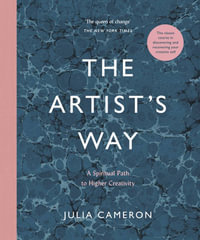A fresh perspective on the influential critic, offering new ways of understanding the art of the Harlem Renaissance "Mercer's sumptuously illustrated study . . . succeeds in positioning Locke as an important philosophical voice in the 'not yet finalized story of Afro-modern art and culture.'"--Douglas Field, Times Literary Supplement
Alain Locke (1885-1954), leading theorist of the Harlem Renaissance, maintained a lifelong commitment to the visual arts. Offering an in-depth study of Locke's writings and art world interventions, Kobena Mercer focuses on the importance of cross-cultural entanglement. This distinctive approach reveals Locke's vision of modern art as a dynamic space where images and ideas generate new forms under the fluid conditions of diaspora.
Positioning the philosopher as an advocate for an Afromodern aesthetic that drew from both formal experiments in Europe and the iconic legacy of the African past, Mercer shows how Aaron Douglas, Lo s Mailou Jones, and other New Negro artists acknowledged the diaspora's rupture with the ancestral past as a prelude to the rebirth of identity. In his 1940 picture book, The Negro in Art, Locke also explored the different ways black and white artists approached the black image. Mercer's reading highlights the global mobility of black images as they travel across national and ethnic frontiers. Finally, Mercer examines how Locke's investment in art was shaped by gay male aestheticism. Black male nudes, including works by Richmond Barth and Carl Van Vechten, thus reveal the significance of queer practices in modernism's cross-cultural genesis.
Published in association with the Hutchins Center for African & African American Research, Harvard University
Industry Reviews
"Reflecting on works by Palmer Hayden, Malvin Gray Johnson, Lois Mailou Jones, and others, Mercer demonstrates that mourning was central to Harlem Renaissance Africanism. . . . In a striking interpretation of Jones's celebrated painting Les Fetiches (1938), which depicts an ensemble of African statuary swirling in a charged darkness, he writes that the work embodies not a straightforward reclamation of roots but the tragedy and the promise of diaspora."-Julian Lucas, New Yorker
"Mercer's sumptuously illustrated study . . . succeeds in positioning Locke as an important philosophical voice in the 'not yet finalized story of Afro-modern art and culture.'"-Douglas Field, Times Literary Supplement
Shortlisted for the MSA Book Prize
2024 recipient of CAA's Frank Jewitt Mather Award for Criticism
2023 Josephine Miles Award Winner, sponsored by PEN Oakland
"In this brilliantly argued book, Kobena Mercer convinces us that it was the visual art of Africa and the New Negro Renaissance that fashioned the queer international modernity we love today."-Jeffrey C. Stewart, author of The New Negro: The Life of Alain Locke, winner of the National Book Award and Pulitzer Prize, and editor of The New Negro Aesthetic: Selected Writings by Alain Locke
"Kobena Mercer's highly original work virtually defines the field of Locke's views concerning the visual arts and will be indispensable to Locke studies in the future."-Charles Molesworth, Queens College, CUNY
"A meticulous, complex, and poignant account of the profound entanglements that condition Modernist aesthetics as we know it today. Through the key figure of Alain Locke, Mercer traces how African American artists of the Harlem Renaissance confronted, negotiated, trafficked, reimagined, and ultimately re-valued the objects of their 'ancestral origins.'"-Anne Anlin Cheng, author of Second Skin: Josephine Baker and the Modern Surface
"This masterful and indispensable reassessment upends Locke's persistent caricature as a dogmatic ancestralist and synthesizes the complexities of his sprawling oeuvre and his sexuality into a fresh, compelling account of his Afromodern aesthetic philosophy."-John Ott, James Madison University
























